Introduction
Macau, a vibrant fusion of Portuguese and Chinese cultures, is renowned for its culinary treasures. Among these, the Pork Chop Bun (Zhu Pa Bao in Cantonese) stands as a beloved street food icon. This sandwich, featuring a crispy, flavorful pork chop nestled within a soft, slightly sweet bun, has captivated locals and tourists alike. While it may seem like a simple dish, achieving the perfect balance of textures and flavors requires precision, patience, and an understanding of traditional techniques. In this comprehensive guide, we will delve into the history, ingredients, and meticulous steps involved in recreating this Macau classic in your own kitchen. Whether you are a seasoned home cook or a curious food enthusiast, this article will equip you with the knowledge to master the art of the Macau pork chop bun.
A Brief History of the Macau Pork Chop Bun
The origins of the pork chop bun trace back to the mid-20th century, a time when Macau’s streets were buzzing with the blend of Portuguese colonial influences and Cantonese culinary traditions. Legend has it that the dish was popularized by a local tea house owner who sought to create a hearty, affordable meal for laborers. By sandwiching a generous pork chop between two halves of a freshly baked bun, he crafted a portable feast that quickly became a staple. Today, the pork chop bun is synonymous with Macau’s gastronomic identity, often enjoyed at iconic spots like Tai Lei Loi Kei, where lines of eager patrons snake around the block daily.
Ingredients: The Foundation of Flavor
To embark on this culinary journey, gather the following ingredients. Each component plays a pivotal role in achieving the dish’s signature taste and texture.
For the Pork Chop Marinade:

- 400g boneless pork chop (preferably shoulder cut for tenderness)
- 2 tbsp soy sauce
- 1 tbsp oyster sauce
- 1 tbsp honey
- 1 tsp five-spice powder
- 1 tsp garlic powder
- 1 tsp ginger paste
- 1 tsp white pepper
- 1 tbsp Shaoxing wine (or dry sherry)
- 1 tbsp cornstarch
- 2 tbsp vegetable oil (for frying)
For the Bun:
- 300g bread flour
- 50g cake flour (or all-purpose flour as substitute)
- 1 tsp instant dry yeast
- 1 tbsp sugar
- 1 tsp salt
- 180ml warm milk
- 30g unsalted butter (softened)
- 1 egg yolk (for egg wash)
- 1 tbsp sesame seeds (for garnish)
For Assembly:
- 2 tbsp butter (softened, for spreading)
- 1 tbsp honey (for brushing)
- Iceberg lettuce (thinly sliced, optional)
- Tomato slices (optional)
Equipment Checklist
Before you begin, ensure you have the following tools:
- Meat mallet or rolling pin (for tenderizing pork)
- Mixing bowls
- Stand mixer or hands for kneading dough
- Plastic wrap (for dough rising)
- Cast-iron skillet or heavy-bottomed pan
- Oven-safe dish (for baking, if preferred)
- Pastry brush
- Baking tray
- Parchment paper
Step-by-Step Preparation
Marinating the Pork Chop: The Key to Tenderness
The marinade is the soul of the pork chop bun. It infuses the meat with umami-rich flavors while tenderizing it to perfection.
-
Tenderizing the Meat:
Place the pork chop between two sheets of plastic wrap. Using a meat mallet or the flat side of a rolling pin, gently pound the meat until it is approximately ½-inch thick. This process breaks down tough fibers, ensuring a juicy result. -
Preparing the Marinade:
In a bowl, whisk together soy sauce, oyster sauce, honey, five-spice powder, garlic powder, ginger paste, white pepper, and Shaoxing wine. The five-spice powder—a blend of cinnamon, cloves, fennel, star anise, and Szechuan pepper—imparts a warm, aromatic complexity.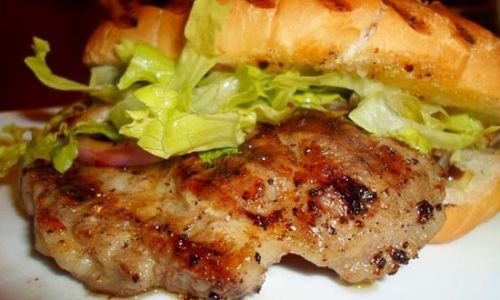
-
Marinating Process:
Submerge the pork chop in the marinade, ensuring it is fully coated. Cover the bowl with plastic wrap and refrigerate for at least 4 hours, or ideally overnight. This extended marination allows the flavors to penetrate deeply.
Crafting the Perfect Bun: A Delicate Balance of Softness and Structure
The bun, or pao, is a sweet, milky bread that contrasts beautifully with the savory pork. Achieving its signature texture requires careful attention to dough hydration and proofing.
-
Activating the Yeast:
In a small bowl, combine warm milk (approximately 110°F/43°C), sugar, and instant dry yeast. Let it sit for 5–7 minutes until frothy. This step ensures the yeast is active. -
Mixing the Dough:
In a stand mixer fitted with a dough hook, combine bread flour, cake flour, salt, and the yeast mixture. Knead on low speed for 5 minutes. Gradually add softened butter, increasing speed to medium. Knead for an additional 8–10 minutes until the dough is smooth, elastic, and passes the windowpane test (stretching a small piece until translucent without tearing). -
First Proofing:
Shape the dough into a ball and place it in a greased bowl. Cover with plastic wrap and let it rise in a warm, draft-free area for 1–1.5 hours, or until doubled in size. -
Shaping the Buns:
Gently deflate the dough and divide it into 4 equal portions. Roll each portion into a ball, then flatten into a 4-inch disc. Place the discs on a baking tray lined with parchment paper. Cover loosely with plastic wrap and let proof for another 30–45 minutes. -
Baking the Buns:
Preheat the oven to 375°F (190°C). Brush the buns with egg wash and sprinkle sesame seeds on top. Bake for 12–15 minutes until golden brown. Transfer to a wire rack to cool completely.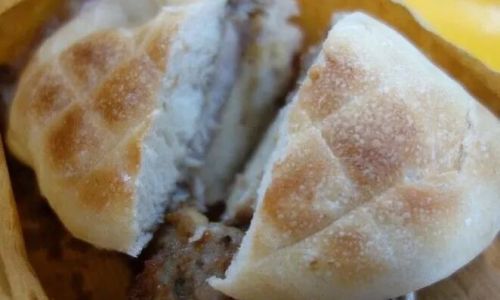
Cooking the Pork Chop: Achieving the Ideal Crust
The cooking method for the pork chop is crucial. While traditional recipes often call for pan-frying, baking offers a healthier alternative without compromising flavor.
-
Pan-Frying Method:
Heat 2 tbsp vegetable oil in a cast-iron skillet over medium-high heat. Remove the pork chop from the marinade (reserving 1 tbsp of liquid) and pat it dry. Cook for 3–4 minutes per side until golden and caramelized. Reduce heat to low, add the reserved marinade, and simmer for 2 minutes. -
Baking Method:
Preheat the oven to 400°F (200°C). Place the pork chop on a wire rack set over a baking tray. Bake for 15–20 minutes, flipping halfway through. For an extra crispy finish, broil for 1–2 minutes on each side.
Assembly: Bringing It All Together
The final step is where magic happens—uniting the components into a harmonious bite.
-
Preparing the Bun:
Slice the cooled bun horizontally, leaving one side intact. Spread a thin layer of softened butter on both halves. -
Adding the Pork Chop:
Place the cooked pork chop on the bottom half of the bun. Brush the meat lightly with honey for a glossy finish. -
Optional Garnishes:
Layer thinly sliced iceberg lettuce and tomato slices on top for freshness.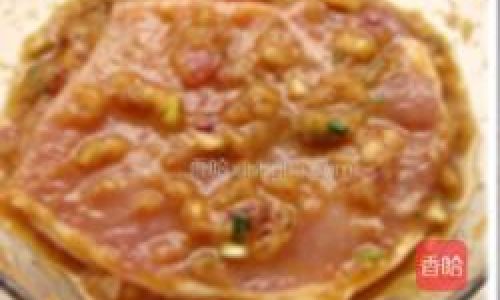
-
Serving:
Close the bun gently. For an authentic touch, wrap the sandwich in parchment paper and serve immediately.
Tips for Perfecting Your Pork Chop Bun
- Meat Selection: Opt for pork shoulder or loin chops with marbling for juiciness. Avoid lean cuts, which can become dry.
- Marinade Consistency: If the marinade is too thick, thin it with a teaspoon of water to ensure even coating.
- Dough Hydration: Adjust flour quantities based on humidity levels. The dough should be tacky but not sticky.
- Crust Enhancement: For an ultra-crispy pork chop, dust it lightly with cornstarch before frying.
- Bun Storage: Fresh buns are best, but leftovers can be revived by lightly toasting.
Variations and Modern Twists
While tradition is revered, contemporary chefs have experimented with innovative adaptations:
- Spicy Kick: Add a pinch of chili flakes or Sriracha to the marinade.
- Cheese Infusion: Layer a slice of melted cheddar or Swiss between the pork and bun.
- Vegetarian Alternative: Substitute the pork with marinated tofu or eggplant steaks.
Troubleshooting Common Issues
- Tough Pork Chop: Overcooking or insufficient marination. Stick to recommended cooking times and marinate overnight.
- Dense Buns: Over-kneading or under-proofing the dough. Follow proofing times strictly.
- Soggy Bun: Assemble just before serving to prevent moisture from the pork softening the bread.
The Cultural Experience: Pairing and Presentation
In Macau, the pork chop bun is often enjoyed with a side of crispy fries and a glass of iced milk tea. To replicate this experience:
- Beverage Pairing: Serve with Hong Kong-style milk tea (sweetened black tea with evaporated milk) or a cold lemonade.
- Plating: Present the bun on a stainless-steel tray with a side of pickled vegetables for acidity.
Conclusion: A Labor of Love
Crafting the perfect Macau pork chop bun is more than a recipe—it’s a celebration of culinary heritage. Each step, from tenderizing the meat to achieving the bun’s delicate crumb, honors the dish’s humble beginnings. While modern adaptations offer creativity, the essence lies in respecting tradition. So, roll up your sleeves, gather your ingredients, and embark on a journey that promises to delight your taste buds and connect you to the vibrant streets of Macau. Whether shared with loved ones or savored solo, this pork chop bun is a testament to the magic that happens when culture and cuisine collide.
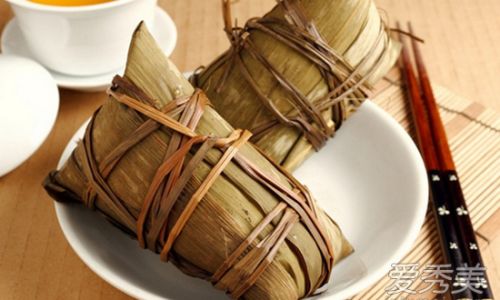
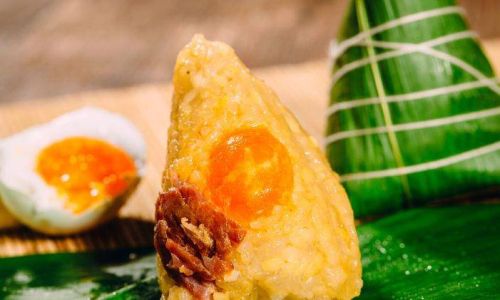
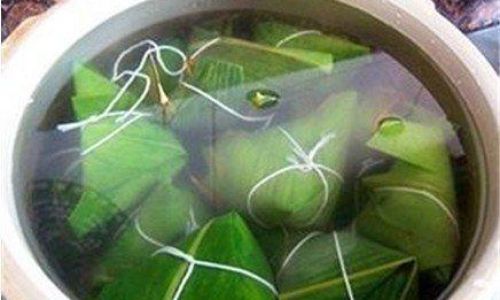


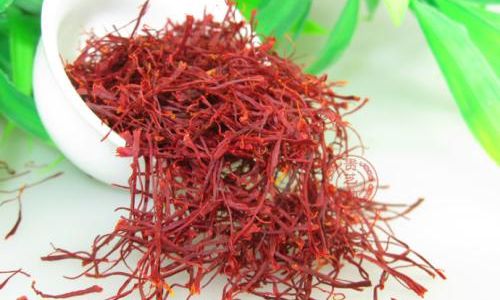
0 comments